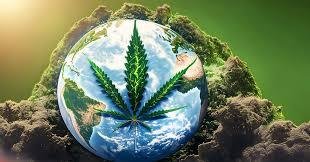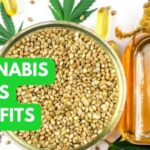By the first quarter of the 21st century, the struggle to implement sustainable measures has become more difficult than ever before.
In 2020, humans had already overused 75% of the planet’s resources. This meant that the rate of consumption was equivalent to 1.75 Earths that could sustain it. In the search for sustainable options, adopting hemp can bring about a radical change. Hemp’s diverse nature and flexibility in its use across different sectors can make it the most preferred sustainable solution in the coming years.
We’ll see how hemp and sustainability coexist in promising ways. Let’s explore 51 things about hemp’s role in sustainability
Hemp Facts In Sustainable Agriculture
1. Deep taproot systems act as nature’s rebar
Hemp grows a deep and complex taproot system that binds the soil and improves soil aeration, water seepage, and nutrient absorption. Depending on soil conditions, hemp roots can grow 10-12 inches in a month. On average, its secondary roots can grow up to 2.5 feet, while the primary root can be 6-8 feet deep.
2. Year-round soil protection
Post-harvest, hemp stalks and roots that are left behind protect the soil. Quick decay of these remains acts as a natural mulch, adding back organic matter to the soil. This provides excellent soil protection, especially in winter when the soil remains exposed. Hemp can return two-thirds of organic matter if it is field-retted.
3. Excellent rotation crop
Several studies show excellent results of crop rotation in the use of hemp and sustainability in agriculture. Crops like corn, soybeans, tobacco, and wheat grown in rotation with hemp have shown a 10-20% increase in yields in subsequent yields. A study in China that researched hemp facts as a rotational crop found that diseases decreased, plant yields increased, and soil microbial diversity enhanced.
4. Strong phytoremediation properties
Hemp acts like a natural vacuum cleaner for contaminated soils. Heavy metals like cadmium, lead, copper, and nickel are removed by the crop. With its deeply penetrating root system, it provides heavy metal extraction from deep soil-level accumulations. During the growing season, hemp can remove up to 50% of cadmium and 90% of lead from polluted soil. Studies on the role of hemp in removing soil contaminants have shown positive results in hemp statistics. Hemp can reduce exchangeable cesium in the soil by 11%–23%.
5. Natural weed suppressor
Hemp is a fast-growing crop, and in its growth stage, it forms a canopy with dense foliage. The shade suppresses weeds and prevents the need for chemical herbicides. Studies show that hemp can significantly reduce the most resilient weeds, like bindweed and knapweed, within a season.
6. Carbon sequestration
Hemp can absorb more CO2 per acre than trees. It captures atmospheric carbon at double the rate of forests. It stores approximately 45% of the atmospheric carbon taken up during photosynthesis. Hemp’s ability as an excellent carbon sink is shown in hemp and sustainability in land management.
7. Water efficiency and conservation
Hemp is a highly sustainable fiber crop due to its modest water requirements. Cotton, a popular eco-friendly choice for natural fiber, needs 10,000 liters of water to produce 1 kg of fiber. Hemp often grows using only natural rainwater and without irrigation. It has a 38% lower crop water requirement and a 60% lower water footprint compared to cotton. It requires 84% lower crop irrigation and has a 91% lower irrigated water footprint than cotton. Adding to these remarkable hemp statistics about water efficiency is the fact that it is a highly drought-resistant crop.
8. Hemp promotes biodiversity
As a rotational crop, hemp can maintain a flourishing biodiversity for years. The dense foliage and canopies developed by the closely growing plants can create mini ecosystems and link fragmented and fragile habitats. Hemp produces a high volume of pollen when other crops aren’t. This helps pollinators like bees thrive in late seasons.
9. High pest resistance reduces reliance on chemical pesticides
Hemp has natural resistance to a lot of pests and diseases. This makes it an attractive natural fiber crop. Hemp is used as a part of integrated pest management systems (IPM) where physical, biological, and chemical strategies are combined with resistant host plants. As intensive pesticide use is not needed for hemp, it benefits fauna such as bees and butterflies.
10. Less reliance on chemical fertilizers
One of the important hemp facts in sustainable agriculture is the reduced need for nitrogen fertilizers in hemp cultivation. This tackles an important environmental issue with fertilizers that make the soil acidic by leaching nitrates. Hemp’s deep root system easily absorbs mineralized nitrogen available in the soil. When hemp is used with legumes as cover crops, it further enriches the soil and significantly reduces the need for adding nitrogen fertilizers.







